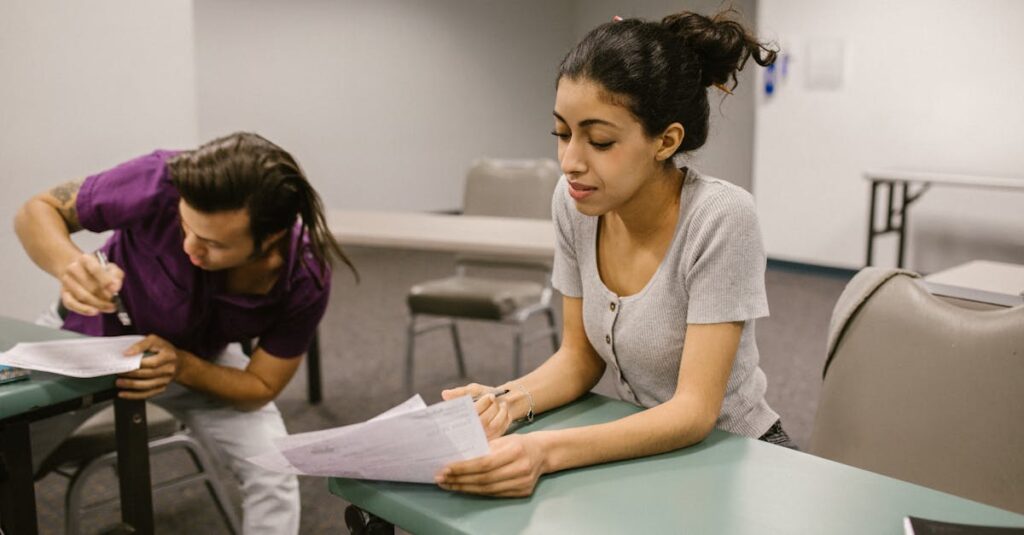Classroom assessment techniques (CATs) are valuable tools that help teachers evaluate students’ understanding and progress in the learning process. As an expert in the field of education, it is essential to have a deep understanding of various assessment techniques and their effective implementation in the classroom. In this article, we will explore everything you need to know about classroom assessment techniques, including how to use them, examples, comparisons, and tips for successful implementation.
What are Classroom Assessment Techniques?
Classroom assessment techniques, also known as CATs, are methods used by teachers to gather information about students’ knowledge, skills, and attitudes in the learning process. These techniques involve various forms of formative assessment, which provide continuous feedback to both students and teachers, allowing for adjustments to be made in instruction and learning strategies.
Benefits of using Classroom Assessment Techniques
- Provides immediate feedback to students
- Helps identify areas of improvement for students
- Allows for adjustment of instruction and learning strategies
- Encourages student engagement and participation
- Promotes a deeper understanding of content
Types of Classroom Assessment Techniques
There are numerous types of classroom assessment techniques that teachers can use in their classrooms. Some of the most common include:
- Minute Papers: These are short written responses to questions posed by the teacher at the end of a class session.
- One-Minute Essay: Similar to minute papers, but instead, students are given one minute to respond to a specific question or prompt.
- Muddiest Point: Students write down the most challenging concept, idea, or question from a lesson.
- Concept Mapping: Students visually represent their understanding of a topic by creating a graphic organizer.
- Think-Pair-Share: This technique involves students thinking about a problem individually, discussing it with a partner, and sharing their thoughts with the whole class.
- Self-Assessment: Students assess their own understanding or performance in a particular area.
- Peer Assessment: Students assess their peers’ understanding or performance in a particular area.
How to Use Classroom Assessment Techniques
To effectively use classroom assessment techniques, teachers must follow a few essential steps.
Step 1: Identify Learning Goals and Objectives
Before implementing any assessment technique, it is crucial to have a clear understanding of the learning goals and objectives for the lesson or unit. This will help determine which CATs are most appropriate for assessing student understanding towards those goals.
Step 2: Introduce the Technique to Students
It is essential to take the time to explain to students why you are using a particular classroom assessment technique and how it will benefit them in their learning. This will also help students understand the purpose of each activity and encourage them to participate fully.
Step 3: Give Clear Instructions
Make sure to provide students with clear and concise instructions for each assessment technique. If necessary, model the process so that students have a better understanding of what is expected of them.
Step 4: Allow Sufficient Time for Completion
Ensure that students have enough time to complete the assessment task. Rushing through an assessment can lead to inaccurate results, so it is crucial to give students adequate time to think and respond.
Step 5: Collect and Analyze Data
After students have completed the assessment, it is essential to collect and analyze the data gathered. This will provide valuable insights into students’ understanding and progress, helping to inform future instruction and learning strategies.
Examples of Classroom Assessment Techniques

Here are a few examples of how classroom assessment techniques can be used in the classroom:
Minute Papers
During a history lesson, the teacher poses the question, “What was the main cause of World War II?” Students have one minute to write down their response on a notecard. The teacher then collects the cards and quickly reads through them to gain an understanding of students’ understanding of the topic.
Concept Mapping
In a science class, students are learning about the water cycle. The teacher asks students to create a concept map that shows how water moves through the cycle and the different processes involved. This technique allows students to visually represent their understanding and identify any missing or incorrect information.
Think-Pair-Share
In an English class, the teacher presents a quote from a book and asks students to think about its meaning. Students then discuss their thoughts with a partner before sharing their ideas with the whole class. This technique encourages active participation and allows students to learn from each other’s perspectives.
Comparing Classroom Assessment Techniques

While all classroom assessment techniques serve the purpose of assessing student understanding and progress, they differ in their approach and the type of data collected. Some may be more suitable for certain subjects or age groups, while others may be better suited for different learning styles.
Informal vs. Formal Assessments
Classroom assessment techniques can be divided into two categories: informal and formal assessments.
- Informal assessments, such as minute papers and one-minute essays, are quick and straightforward ways to gather information about students’ understanding and progress.
- Formal assessments, such as quizzes and tests, are more structured and involve predetermined questions or tasks, often with a grading component.
Individual vs. Group Assessments
Classroom assessment techniques can also be done individually or in groups.
- Individual assessments, such as self-assessment and peer assessment, focus on individual student understanding and progress.
- Group assessments, such as concept mapping and think-pair-share, allow for collaboration and discussion amongst students, providing additional learning opportunities.
Tips for Successful Implementation of Classroom Assessment Techniques
Here are a few tips to keep in mind when implementing classroom assessment techniques:
- Be consistent with using CATs throughout the year to gather accurate and reliable data.
- Use a variety of techniques to cater to different learning styles and provide a well-rounded assessment.
- Use data gathered from CATs to inform instruction and adjust teaching strategies as needed.
- Encourage students to participate fully by making the assessment process engaging and meaningful.
FAQs about Classroom Assessment Techniques
1. How often should teachers use classroom assessment techniques?
Teachers can use classroom assessment techniques as often as they see fit, but it is essential to be consistent in their use to gather accurate and reliable data.
2. Can classroom assessment techniques be used for grading purposes?
While some CATs may involve a grading component, the primary purpose of these techniques is to gather information about students’ understanding and progress, not to assign grades.
3. Do all students have to participate in classroom assessment techniques?
While it is encouraged for all students to participate, some students may feel uncomfortable sharing their thoughts in front of the whole class. Teachers can provide alternative methods for participation, such as writing responses instead of speaking them aloud.
4. How can I ensure that students take classroom assessment techniques seriously?
One way to ensure students take CATs seriously is to explain the purpose and benefits of using these techniques. Additionally, providing feedback on their responses can also motivate students to put effort into completing the task.
5. Can classroom assessment techniques be used in online learning?
Yes, classroom assessment techniques can be adapted for online learning by using virtual tools such as discussion boards, quizzes, and concept mapping software.
Conclusion
Classroom assessment techniques are valuable tools that help teachers gather information about students’ understanding and progress in the learning process. By implementing these techniques effectively, teachers can gain valuable insights into student learning and make necessary adjustments to instruction and learning strategies. With a variety of techniques available, it is essential to choose the ones that best suit your teaching style and students’ needs. By following the steps outlined in this article and keeping the tips in mind, teachers can successfully use classroom assessment techniques to support student learning and growth.

